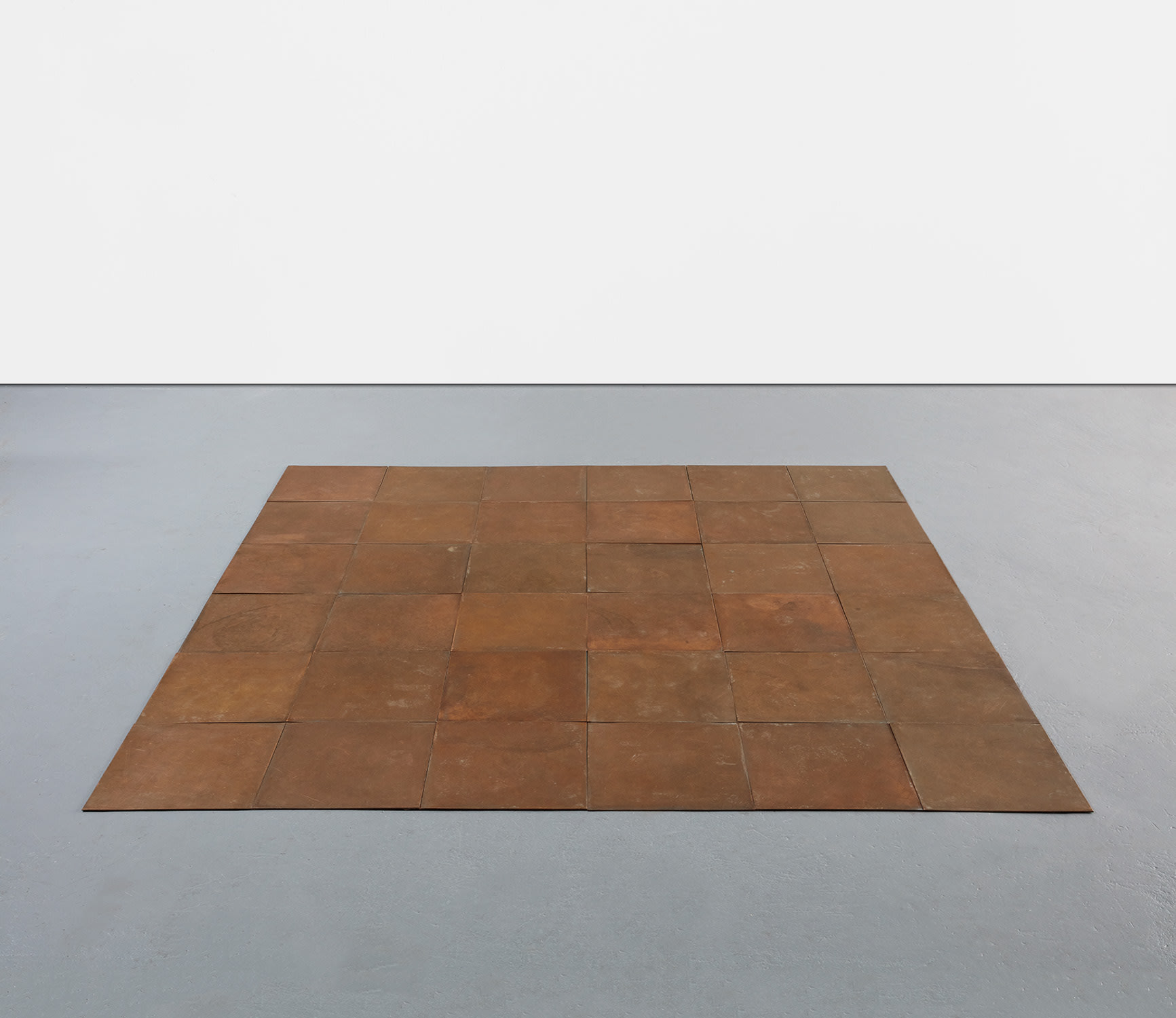

Property from a Distinguished Collection
38Ο
Carl Andre
36 Copper Square
copper, in 36 parts
each .5 x 50 x 50 cm (1/4 x 19 5/8 x 19 5/8 in.)
overall .5 x 300 x 300 cm (1/4 x 118 1/8 x 118 1/8 in.)
overall .5 x 300 x 300 cm (1/4 x 118 1/8 x 118 1/8 in.)
Executed in 1968, this work is accompanied by a certificate of authenticity signed by the artist.